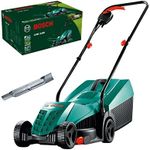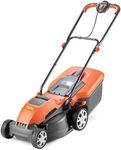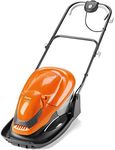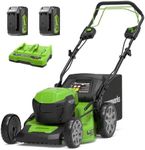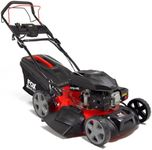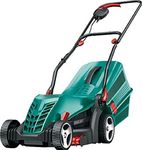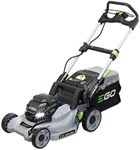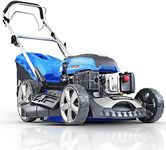Buying Guide for the Best Honda Lawn Mowers
When choosing a Honda lawn mower, it's important to consider the size and type of your lawn, as well as your personal preferences for features and ease of use. Honda is known for its reliable engines and durable construction, so you're already on the right track by considering this brand. However, to ensure you select the best model for your needs, you'll want to pay attention to several key specifications that can impact performance and user experience.Engine PowerEngine power in lawn mowers is measured in horsepower (HP) or cubic centimeters (cc). This spec is crucial because it determines how effectively the mower can cut through grass, especially if it's thick or overgrown. For small to medium-sized lawns, an engine with lower power (around 140cc to 160cc) is usually sufficient. For larger lawns or tougher mowing conditions, you might need a more powerful engine (above 160cc). Consider the size of your lawn and the type of grass you have when deciding on the engine power.
Cutting WidthThe cutting width refers to the width of the strip of grass that the mower can cut in a single pass. This is important because it affects how quickly you can mow your lawn. A wider cutting width (21 inches or more) is ideal for larger lawns as it reduces the number of passes needed. For smaller lawns or areas with tight spaces, a narrower cutting width (around 16 to 20 inches) might be more maneuverable and practical. Choose a cutting width that matches the size and layout of your lawn.
Self-Propelled vs. PushSelf-propelled mowers have a drive system that moves the mower forward, which can make mowing easier, especially on hilly or large lawns. Push mowers, on the other hand, require you to manually push them, which can be more physically demanding but also gives you more control. If you have a flat, small lawn, a push mower might be sufficient. For larger or sloped lawns, a self-propelled model can save you time and effort. Consider your physical ability and the terrain of your lawn when choosing between these options.
Mulching, Bagging, and Side DischargeThese are the three main options for handling grass clippings. Mulching mowers finely chop the grass and return it to the lawn, which can help fertilize it. Bagging mowers collect the clippings in a bag, leaving a clean lawn but requiring disposal of the clippings. Side discharge mowers expel the clippings out the side, which can be useful for quickly mowing large areas. Think about how you want to manage your clippings and whether you prefer a clean lawn or the benefits of mulching.
Adjustable Cutting HeightThis feature allows you to change the height at which the grass is cut. It's important because different grass types and seasons require different cutting heights for optimal health. Most mowers offer a range of cutting heights, typically from 1 to 4 inches. If you have a specific grass type or want to maintain a certain lawn appearance, look for a mower with a wide range of adjustable cutting heights. This flexibility can help you keep your lawn looking its best throughout the year.
Deck MaterialThe deck is the part of the mower that houses the blade. Deck material can affect the mower's durability and weight. Common materials include steel, which is durable but heavier, and plastic or composite, which is lighter and resistant to rust. If you need a mower that's easy to maneuver and store, a lighter deck might be preferable. For long-term durability, especially if you frequently mow in rough conditions, a steel deck could be a better choice. Consider how often and in what conditions you'll be using the mower.
